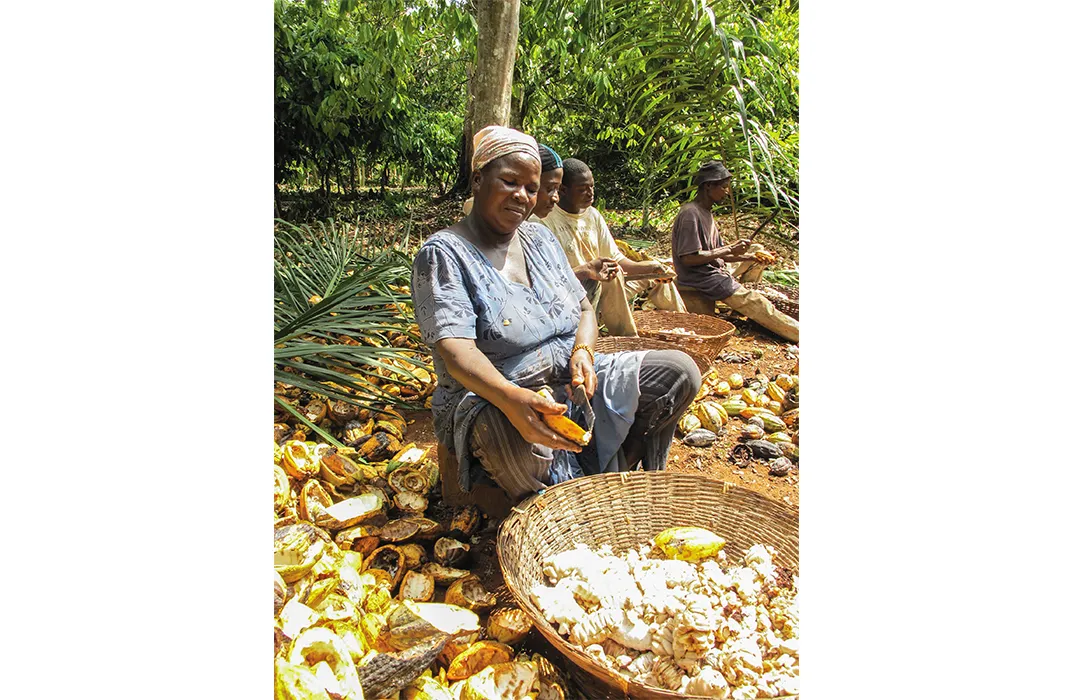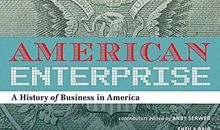The Big, Refrigerator-Sized Machine That Saved Chocolate
When cacao production was threatened by disease, the Mars candy company launched a global initiative to sequence the plant’s genome
/https://tf-cmsv2-smithsonianmag-media.s3.amazonaws.com/filer/34/63/34638a6e-2b69-426a-bbb6-7c4b51f99af9/p188rochejn20143688web.jpg)
The artifact is neither sexy nor delicate, as Mallory Warner will tell you. Warner, who works in the division of medicine and science at the Smithsonian’s National Museum of American History, helps to curate a large archive of items that have, in some way, changed the course of science. She points to a DNA analyzer used by scientists in the Human Genome Project (the landmark effort that yielded the first complete blueprint of a human’s genetic material) and a photograph film from a 1970s attempt to build a synthetic insulin gene. Many of the pieces related to genetic research, she says, are “hulking, refrigerator-size scientific things.”
The Roche 454 GS FLX + DNA gene sequencer, which was produced from 2005 to 2015, is actually a bit shorter than a refrigerator: it weighs more than 500 pounds, according to official product specifications. The Roche machine is also unique: it was the first next-generation gene sequencer to be sold commercially. It used a then-new technology known as sequencing-by-synthesis to tease apart the sequence of bases that comprise genetic code.
Even the tiniest organism—too small to be seen with the naked eye—contains hundreds of genes that work together to determine everything from its appearance to the way it reacts to disease. These genes are made up of alternating patterns of bases. By reading the patterns—a process known as gene sequencing—scientists can learn a great deal about how an organism operates.
Next-generation sequencers dramatically reduced the cost and time required for gene sequencing. Although that may seem like an esoteric credential, consider that the Human Genome Project took about 13 years and an estimated $3 billion to sequence the entire human genome, largely relying on a method known as Sanger sequencing. A next-generation Roche 454 machine could do that task in ten days, according to the company, making it possible for small teams to stitch together enormous amounts of genetic data in significantly less time.
The Roche 454 sequencers have been used to unravel the genetic mysteries of strawberries, bacteria and Neanderthals; they have produced data that have helped scientists understand disease resistance in the developing world; and, in one memorable case, diagnosed a young American boy whose condition stumped doctors for years.
The Roche 454 sequencers have been used to unravel the genetic mysteries of strawberries, bacteria and Neanderthals; they have produced data that have helped scientists understand disease resistance in the developing world; and, in one memorable case, diagnosed a young American boy whose condition stumped doctors for years.
But one of the most interesting things a Roche 454 has done is possibly help secure the future of chocolate.
About 25 years ago, many people became deeply concerned about the world’s chocolate supply. Chocolate as we know it—in its sweet, delicious form—is made from cacao beans, which are the product of the Theobroma cacao tree.
T. cacao is native to Central and South America, and people have been harvesting its beans for centuries. Europeans first came across the cacao tree in early trips to what they called the New World. The natural product of cacao beans is bitter, so Europeans started mixing chocolate with sugar, and a craze began that has yet to end. Chocolate is a multi-billion dollar business today with growing demand coming from countries like China, India, Russia and Brazil.

But emerging demand comes up against ancient problems. To expand production, cacao trees were transplanted to West Africa, where they could grow comfortably in the tropical climate. However, cacao trees take several years to mature, and they’re not very productive: a single tree produces roughly enough pods to make one pound of chocolate every year.
Still, the most pressing problem seems to be that these trees are highly susceptible to disease. In the late 1980s, a devastating blight with a fanciful name—witches’ broom fungus—began to blossom on cacao trees in the Brazilian region of Bahia. Witches’ broom gets its name from the tiny, broom-shaped clusters of branches that form on infected trees. In just a decade, Bahia’s chocolate production dropped by more than half. Scientists and candy makers became terrified that witches’ broom—or frosty pod, another devastating fungus that infects cacao trees—would reach farms in the West African countries of Ghana, the Ivory Coast and Nigeria, home to many of the world’s top cocoa bean exporters.
“Our issue was that we needed to be able to breed trees that are resistant to frosty pod and witches’ broom before those diseases make it to West Africa,” says David Kuhn, a research molecular biologist for the USDA in Miami. “Because if [that] happens, your candy bar will be $35.”
If a $35 candy bar does not seem like a catastrophe, consider that an estimated 6.5 million farmers depend on chocolate for their livelihoods and an abrupt change in the market could result in devastating effects.
Scientists in Miami were looking at breeding disease-resistant trees, but it was slow going. Kuhn explains that “tree breeding by its nature is a very slow process. You have to make a cross, hand-pollinate the trees, get the pods, take the seeds, plant them, and then you wait three to five years for those trees to flower and then you’ll be able to evaluate them.” In other words, it takes three to five years before scientists can figure out whether a particular crop of trees has been successfully bred to yield disease-resistant beans.
/https://tf-cmsv2-smithsonianmag-media.s3.amazonaws.com/filer/e8/c1/e8c1bb4a-c63f-4b6d-9ddb-0be995a56733/h-shapirococoabrazilweb.jpg)
In 2008, inspired by the rise of sequencing technology, candy company Mars, Inc., under the direction of Howard Shapiro, agreed to contribute $10 million to fund a multinational project to sequence the entire T. cacao genome. A complete copy could speed up the breeding process by allowing scientists and breeders to more quickly pinpoint which specific genes guard against disease. Because the tree is tropical, a multinational consortium evolved to work on the cacao genome project. A team in Costa Rica sampled a local T. cacao tree. Kuhn’s lab in Miami helped extract the plant’s genetic material, and then sent that material on to labs where the genetic material was processed and sequenced.
T. cacao was the “first large plant that we had ever done,” says Keithanne Mockaitis, the former sequencing director at Indiana University. She had been working with the Roche 454 and other next-generation sequencers for a couple of years, but the size and detail of the T. cacao project made it one of their most ambitious projects yet.
She says Mars helped by introducing scientists, breeders and farmers from around the world to each other. “We would have conferences and sometimes they would actually invite the African cacao breeders, and that was wonderful because I was able to meet them and understand what they know,” says Mockaitis.
The contacts with the farmers were invaluable, in part because the project’s data would be open source. That means the scientists’ findings would be made available on a website, for free, to anyone who wanted to access them.
The first public website went up in 2010, with a complete set of results. For another three years, the team worked on adding data and generating a fuller genome, and they released a paper in 2013. Although challenges remain for chocolate, Mockaitis says the genome is a positive first step.
Six years ago, Peter Liebhold, chair of the museum’s division of work and industry at the museum, came across the cacao genome project while researching potential artifacts for a large exhibition on the history of American businesses. He was drawn to the open source project because it represented a novel and successful approach to the research and development process.
“In thinking about R&D, we wanted to say that it was important and accomplished in very different ways,” says Liebhold. He floated the idea of acquiring Indiana University’s Roche 454 sequencer, which could be credited with helping saved chocolate.
Although the machine was fading from use and had been replaced by newer technology—it was scheduled to be discontinued by the manufacturer in 2015—asking for a full gene sequencer was bold. During their heyday, sequencers cost around $700,000 (now that the product line is winding down, you can buy one on eBay for much less). “The joy of working at the Smithsonian is that you can make unreasonable requests of people,” says Liebhold.
Mockhaitis, a Virginia native who cites her teenage trips to the Smithsonian as one of the reasons she become a scientist, was thrilled to hear about the request. Roche agreed to pay for Indiana University to donate their machine, ship it and service it. Mockaitis had moved to a new lab, but she supplemented the donation with sample tubes and testing plates from her lab.
One of the plates donated by Mockaitis—called a picotiter testing plate—appears in the exhibition, alongside a photo of cacao farmers and a replica of a cacao pod. In a photo, the sequencer gleams against a dark background, its neat surfaces appearing to hum with function. Above the photo is a long, blunt knife that a cacao farmer might use in a harvest. The gap between the two sets of instruments is vast, but, as the exhibit attempts to demonstrate, the gap can be bridged.
“This [story] is particularly nice because it’s such a global story,” says Warner. “We have scientists all over North America, and the work going to benefit farmers in other parts of the world.”
As for the sequencer itself, it’s currently living in a box in the museum’s storage. It was too big for the exhibition, says Warner, but she’ll show it to whomever asks, including—recently—to a visiting Roche executive. The technology, Liebhold admits, is “no longer the cutting edge.” The sequencer was critical to the tale, but it has already moved into history.
/https://tf-cmsv2-smithsonianmag-media.s3.amazonaws.com/accounts/headshot/anika-gupta-240.jpg)




/https://tf-cmsv2-smithsonianmag-media.s3.amazonaws.com/accounts/headshot/anika-gupta-240.jpg)